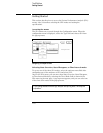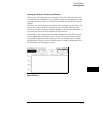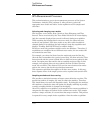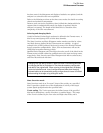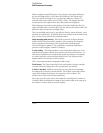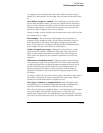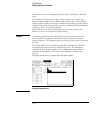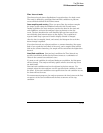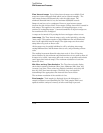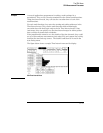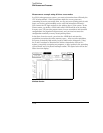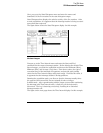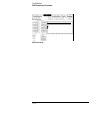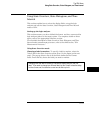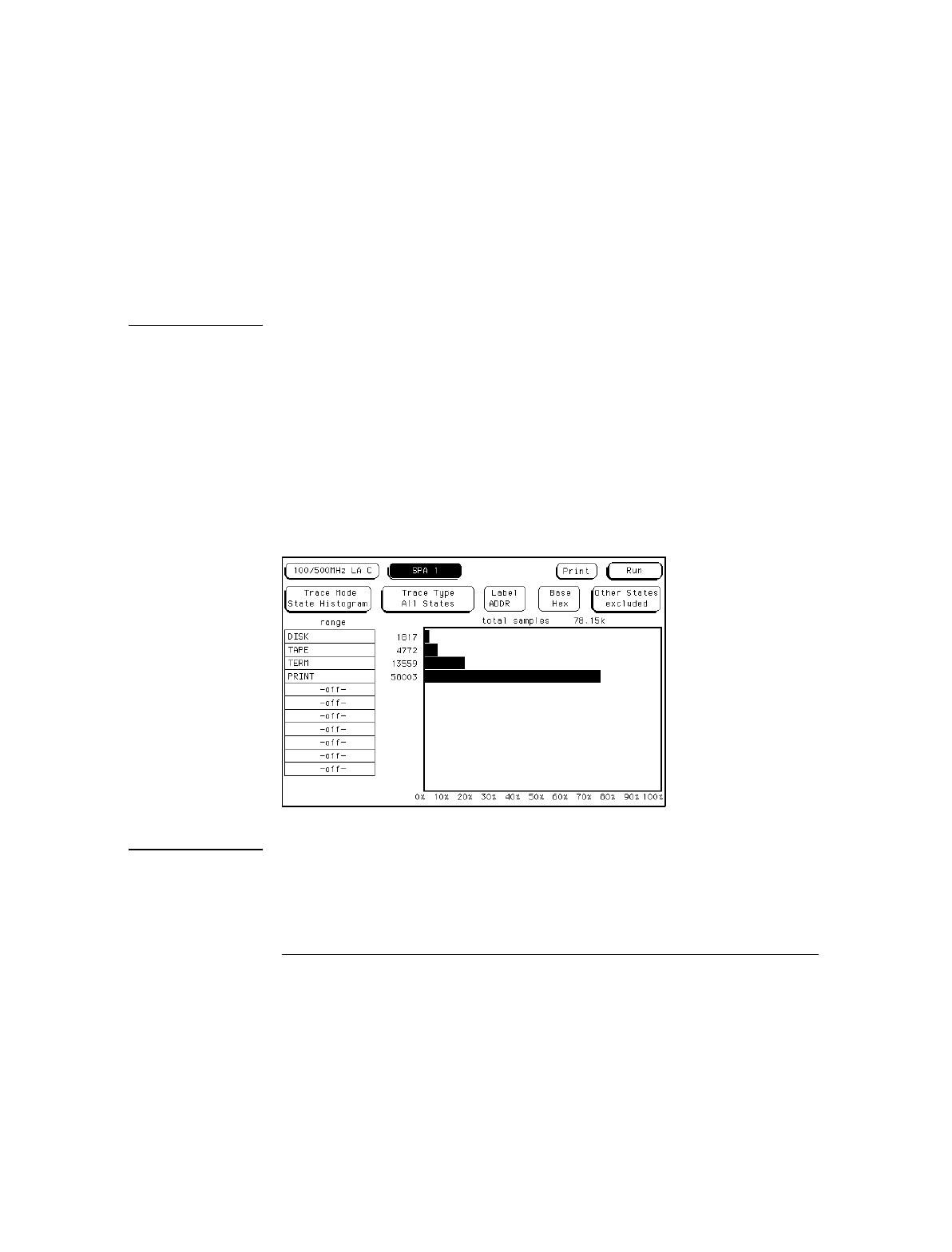
the Format menu as a combination of values, in the current base, and don’t
cares.
For example, a microprocessor target system memory may contain two
arrays. In State Histogram, the address ranges of the arrays can be defined
and the relative activity in the arrays monitored. But, what if you only want to
monitor writes to the array? In this case, you can define the data qualification
as "Memory Write" on the STATUS label.
States that do not meet the qualification criteria are not stored by the
analyzer, so they are not included in Other States.
Example
A computer system has several I/O devices, such as a data terminal, disk
drive, tape drive, and printer. Each device has its own service routines
stored in memory. The problem is that one or more of the devices is tying up
the CPU.
The system address bus is monitored using State Histogram to define the
memory blocks where the service routines are stored. The histograms
quickly show that the print spooler is not working because the printer is
constantly interrupting the CPU and is consuming 80% of address bus
activity.
The figure below shows a sample State Histogram display.
SPA State Histogram Menu
The SPA Menu
SPA Measurement Processes
11-14



